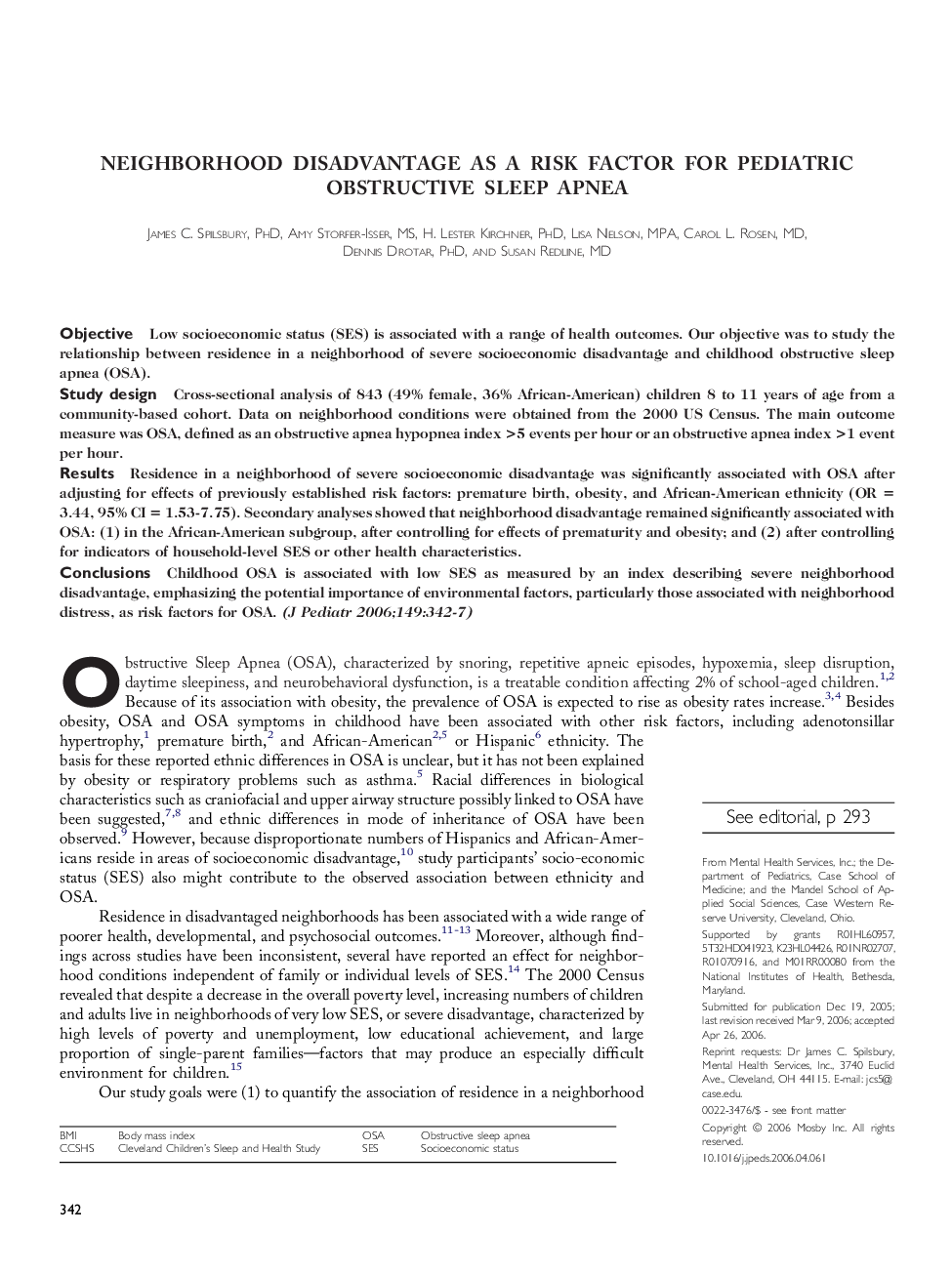| Article ID | Journal | Published Year | Pages | File Type |
|---|---|---|---|---|
| 4169304 | The Journal of Pediatrics | 2006 | 6 Pages |
ObjectiveLow socioeconomic status (SES) is associated with a range of health outcomes. Our objective was to study the relationship between residence in a neighborhood of severe socioeconomic disadvantage and childhood obstructive sleep apnea (OSA).Study designCross-sectional analysis of 843 (49% female, 36% African-American) children 8 to 11 years of age from a community-based cohort. Data on neighborhood conditions were obtained from the 2000 US Census. The main outcome measure was OSA, defined as an obstructive apnea hypopnea index >5 events per hour or an obstructive apnea index >1 event per hour.ResultsResidence in a neighborhood of severe socioeconomic disadvantage was significantly associated with OSA after adjusting for effects of previously established risk factors: premature birth, obesity, and African-American ethnicity (OR = 3.44, 95% CI = 1.53-7.75). Secondary analyses showed that neighborhood disadvantage remained significantly associated with OSA: (1) in the African-American subgroup, after controlling for effects of prematurity and obesity; and (2) after controlling for indicators of household-level SES or other health characteristics.ConclusionsChildhood OSA is associated with low SES as measured by an index describing severe neighborhood disadvantage, emphasizing the potential importance of environmental factors, particularly those associated with neighborhood distress, as risk factors for OSA.
